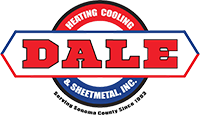If you have chronic health problems, don’t rule out the possibility of being exposed to common pollutants found inside your home.
Even with careful, consistent, and meticulous cleaning, it’s impossible to keep your home completely free of these air pollutants.
According to the Environmental Protection Agency (EPA), they have identified and classified 13 different sources of indoor air pollutants.
Here they are in the order shown on the EPA’s list:
Asbestos
A mineral fiber found in rock and soil used in building construction as insulation and fire retardant due to its strength and heat resistance.
A partial ban prohibiting the use of asbestos was issued by the EPA in 1989 due to health risks.
Asbestos has been classified as a carcinogen, or cancer-causing substance.
Found in ceiling and floor tiles, as insulation, shingles, siding, roofing, auto parts, fire-retardant clothing/furnishings and paper products.
The danger of asbestos exposure comes in when materials containing asbestos are cut or otherwise disturbed which releases high levels of asbestos into the air.
Health issues resulting from asbestos exposure include:
- Asbestosis, which leads to permanent lung damage
- Scarring of the lung lining; fluid collecting in the lungs
- Mesothelioma, cancer of the chest/stomach lining
- Kidney and throat cancer
- Lung cancer
Biological Pollutants
Keeping humidity levels in your home at 50% or less helps reduce the levels of biological pollutants in your home.
These include:
- Pollen
- Dust
- Bacteria
- Viruses
- Insects such as dust mites and cockroaches
- Animal dander; cat saliva
Exposure to biological pollutants makes existing health issues such as allergies, asthma, mold-specific reactions, influenza and other viruses worse.
Carbon Monoxide (CO)
An odorless toxic gas emitted from gas stoves, fireplaces, exhaust fumes, generators, gas-powered equipment and improperly adjusted boilers and furnaces.
Health issues include fatigue, chest pain/angina, brain fog, and flu-like symptoms.
Cookstoves
A source of household air pollution. Exposure and inhalation of fumes and smoke irritate existing allergies and the lungs.
Formaldehyde/Pressed Wood Products
A chemical used in the manufacture of building products and a variety of household products.
Exposure to formaldehyde irritates eyes, nose, throat and skin.
Lead (Pb)
Primarily found in older homes in the form of lead-based paint. Airborne particles are released into the air when sanding, scraping or otherwise disturbing the paint.
Exposure to lead, especially in babies and young children, may cause damage to the brain or central nervous system.
Nitrogen Dioxide (NO2)
This is a nitrogen oxide or “highly reactive oxidant and corrosive” toxic gas.
This toxic gas is found in combustible sources associated with unvented gas stoves, improperly installed/vented appliances, kerosene heaters and tobacco smoke.
Health concerns include lung/respiratory infections, onset of bronchitis, and irritation of mucus membranes of the eyes, nose and throat.
Pesticides
Toxic chemicals commonly used to kill or control insect and/or rodent activity.
Exposure to the many different types of pesticides increases risk for various forms of cancer, damage to kidneys and central nervous system and irritation or inflammation of the eyes, nose and throat.
Radon (Rn)
Radon is classified as a radioactive gas which forms in the natural decaying process of uranium, which is found in just about every type of soil.
Radon gas is colorless, odorless and can only be detected with special equipment like a radon detector.
Radon gas is released and moves up through the ground, infiltrates the air and enters your home through cracks in the foundation. Once inside the home, it can build up to dangerous levels without you even knowing.
Exposure to radon gas results in lung cancer even in non-smokers.
Indoor Particulate Matter
Particulate matter is an airborne mixture of both solid and liquid particles. Particularly concerning are particles that are 10 micrometers or less in diameter because these tiny particles can be inhaled.
Inhalation of these particles can negatively impact the heart, lungs and aggravate existing respiratory conditions.
Secondhand Smoke / Environmental Tobacco Smoke
The EPA has classified secondhand smoke from cigarettes, cigars or pipes as a Group A carcinogen.
Tobacco smoke contains over 7,000 substances and has been directly linked to causing cancer, especially lung cancer, in addition to heart disease and higher risk of a stroke.
Extra ventilation cannot provide protection from the carcinogenic damage of secondhand smoke.
Volatile Organic Compounds (VOCs)
VOCs are potentially dangerous gases created by the use of literally thousands of solid and liquid products.
Some examples of household VOCs include:
- Aerosol sprays
- Air fresheners
- Correction fluids (White Out™)
- Craft supplies like glue and permanent markers
- Dry-cleaning chemicals left on clothing
- Household cleansers, disinfectants
- Moth repellents
- Paint, paint strippers
- Pesticides
Health effects include skin irritations, fatigue, headache, nausea, loss of muscle coordination, damage to kidneys, liver and central nervous system.
Wood Smoke
Smoke from burning wood or other organic matter gives off a lot of particulate matter, or those tiny particles small enough to inhale.
Inhaling these fumes and particulate matter causes lung irritation, bronchitis, asthma and other respiratory distress. People suffering from heart or lung disease are at higher risk for health issues after wood smoke exposure.
Conclusion
There are so many ways to be exposed to toxic fumes and gases inside your very own home.
Improved air quality starts with a professionally installed and vented HVAC system or air filtering/purifying system. Contact the expert installation team at Dale HCS in Santa Rosa to research your options for a healthier home.

